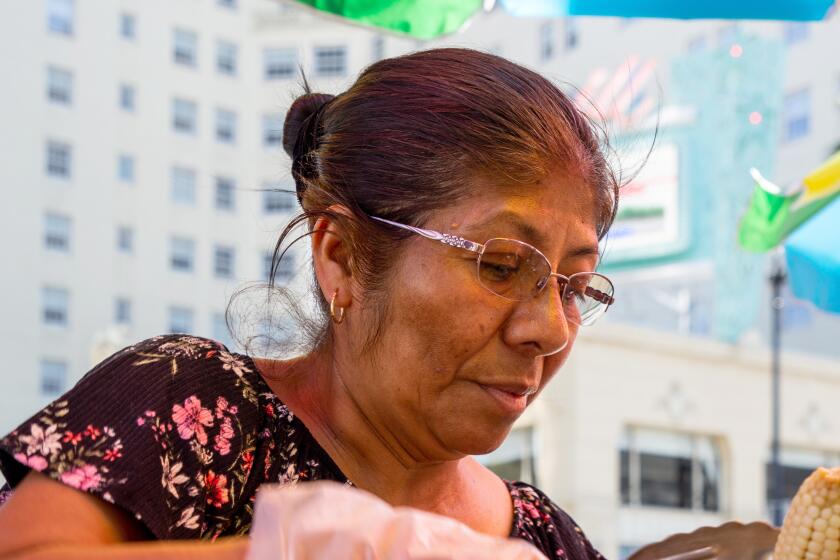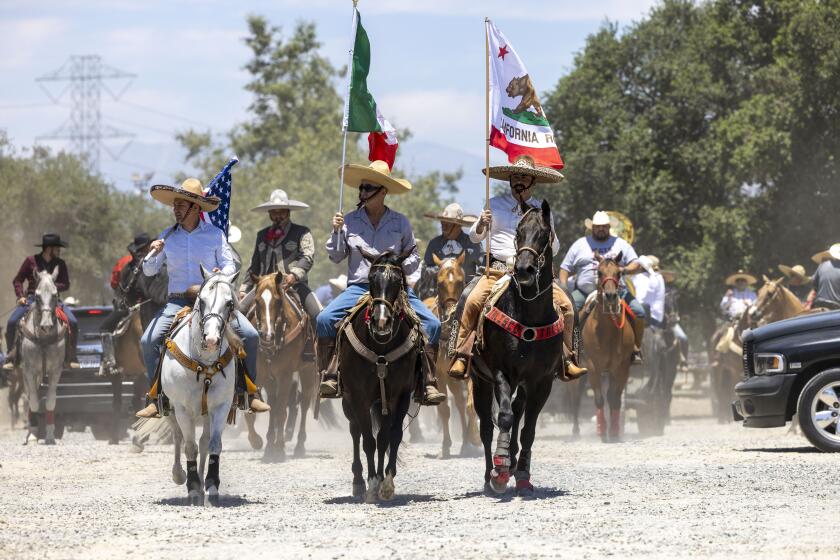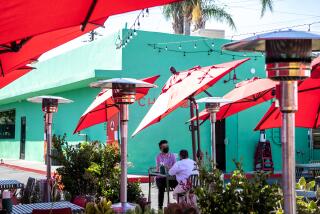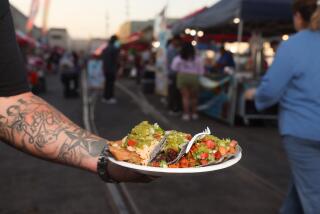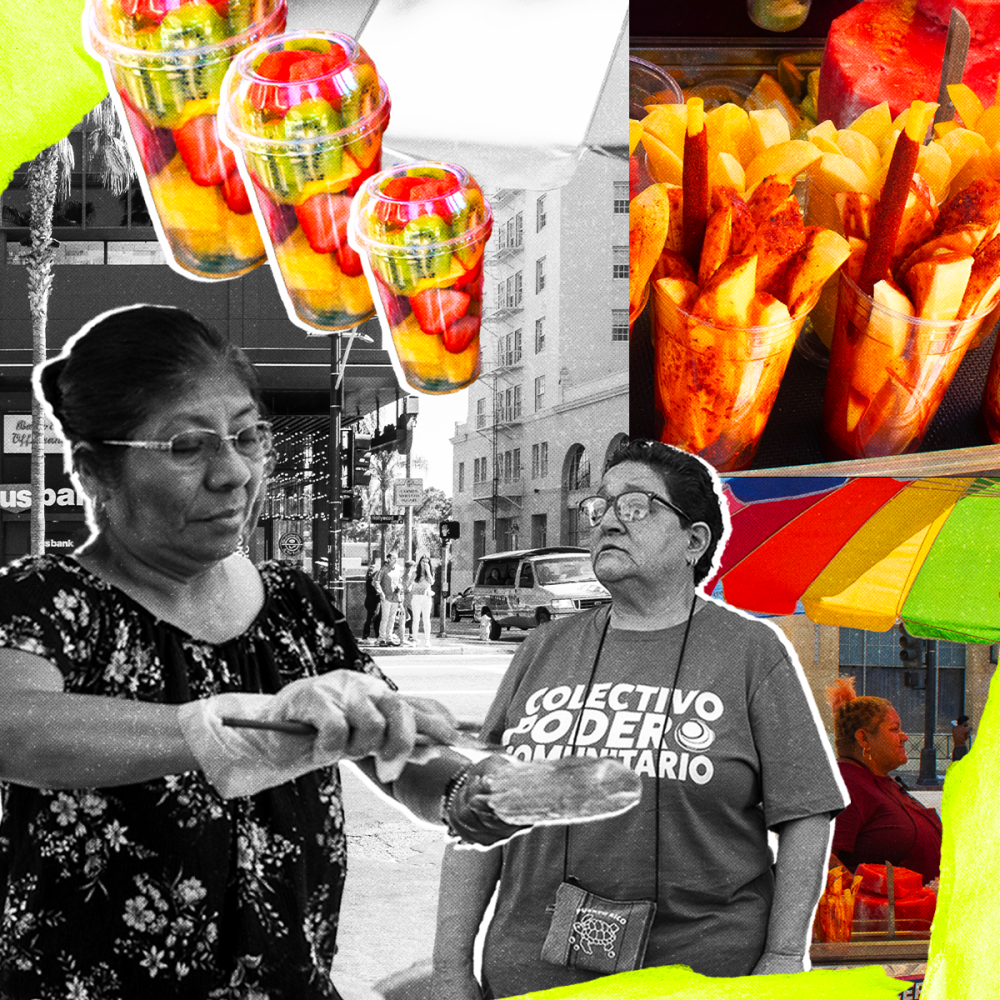
Project )
Across L.A., street vendors can be seen on almost every other block. They sell everything from fresh fruit to tacos de canasta to flowers to elotes; they even kept us safe by selling masks during the COVID-19 pandemic. But despite being an Angeleno staple, vendors say they often feel invisible.
At the height of the pandemic, most businesses were forced to alter operations, but for street vendors, who are subjected to zoning permits and rising food costs, things became even more unstable. Having to find new ways of securing their income, along with food and health permits, combined with inflation, many street vendors are suffering significant financial setbacks.
Vendors like 56-year-old Clara Estrada Vasquez are troubled with how to adjust to the changing times. Vasquez, who is from Guatemala, began selling fruit around Los Angeles nearly 18 years ago. Since the pandemic, she has been struggling to make enough money to pay her bills and support her family.
Through a collaboration with Las Fotos Project, youth photographersâ lenses capture the humanity, vibrancy and joy of three street vendors.
âI have debts I owe for my rent because during the pandemic I didnât work. âThank God, they havenât kicked me out of where I live,â said Vasquez, who also owes money for her electricity and gas bills.
Vazquez is worried about how sheâll keep a roof over her head and about running the risk of selling without the proper city permits. Out of an estimated 10,000 sidewalk vendors who sell food in L.A., the city has issued only 165 permits, according to an August 2021 report released by UCLA.
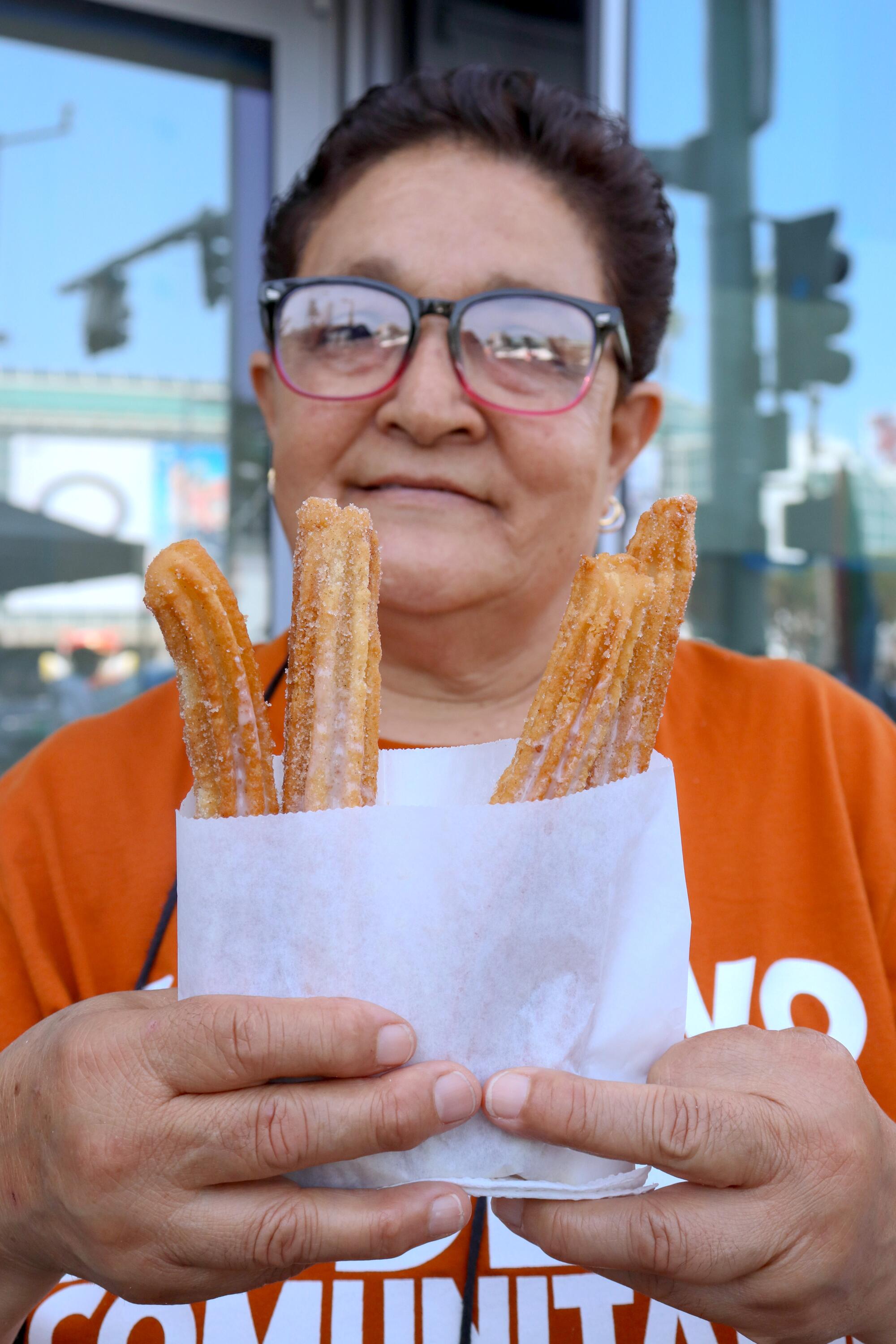
Eva Orozco, who has been selling churros for more than 20 years, also risks going without the proper permits. She said that during the pandemic, when she was selling face masks, she was able to get a sidewalk permit. Now that she is back to selling food in a no vending zone, she cannot renew her permit.
When members of Orozcoâs family migrated to the U.S. from Mexico, they spent time in Washington state before making their way to L.A. Orozco and her husband were looking for work and eventually started their churro business. They have been able to get by with the income they make but say that the permits needed to sell food are not only expensive but also difficult to obtain.
Becoming your familyâs translator of what life is like in El Salvador and the realities of the U.S. takes a toll.
Itâs been nearly five years since Californa Senate Bill 946, which legalized sidewalk vending across the state, was passed and signed into law. The policies associated with the legislation were meant to legitimize street vending and provide protection to vendors. It was also supposed to make the legal process of vending, easier but that doesnât seem to be the case.
Following SB 946, multiple cities passed their own ordinances, which added separate rules and regulations. Today, there are three requirements for merchandise vending and four needed for food vending. Vendors must obtain a business tax registration certificate, a California state sellerâs permit, pay the vending permit fee as well as obtain an L.A. County public health permit.
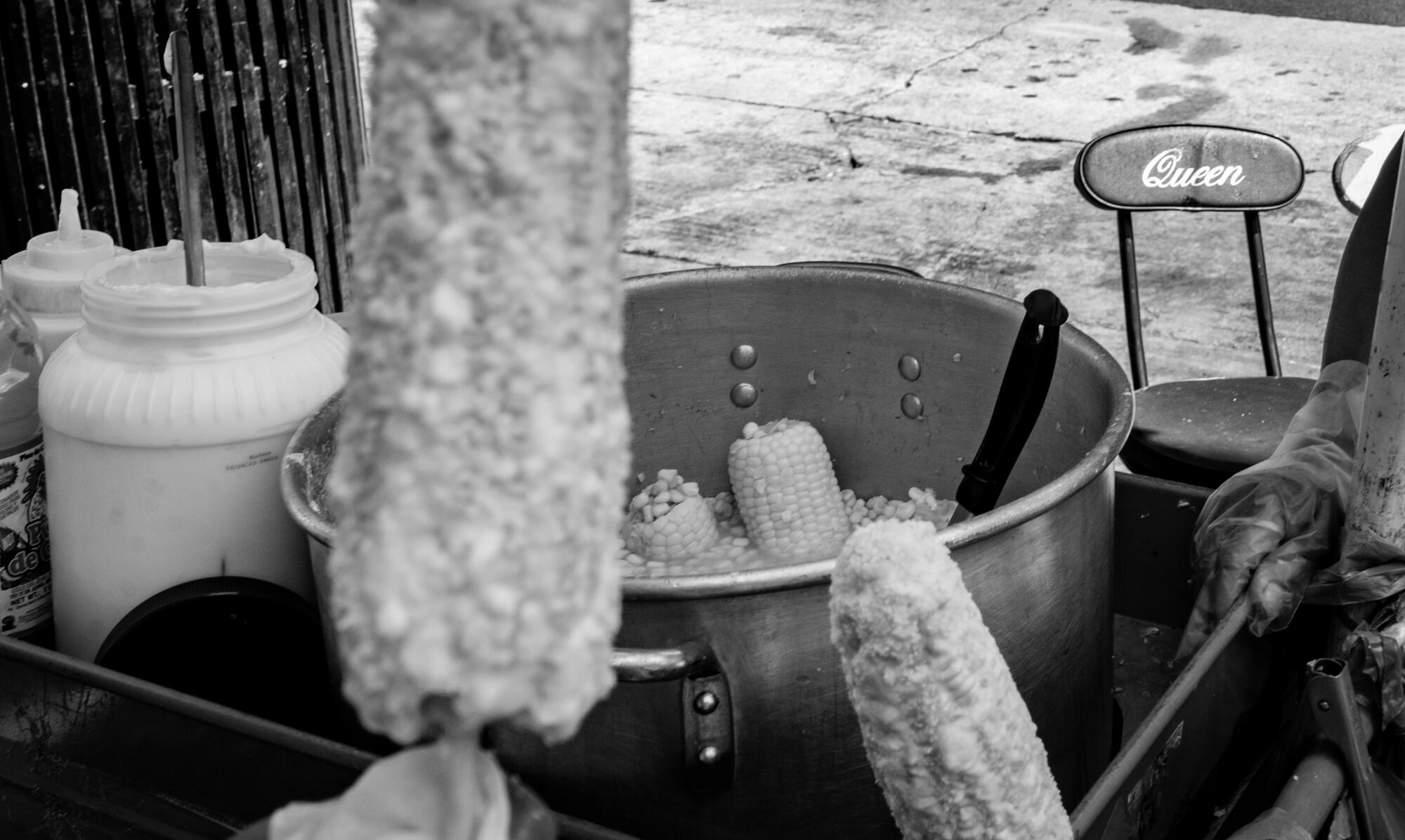
Only a fraction of food vendors are operating under proper permits, even with SB 946 in place.
A combination of inaccessible permitting procedures, high costs, confusing equipment standards and repercussions from enforcement measures are just a few of the reasons why food vendors have a hard time keeping up with city and state requirements.
Vendors like Orozco would be willing to pay for the permits if only they were more accessible. She said she has received resources and information regarding the necessary permits through the Community Power Collective, an independent organization aimed at achieving economic justice for low-income tenants and workers.
Orozco said the main reason she has not been able to renew her food vending permit is because she is trying to sell food in one of L.A. Countyâs âno vending zones.â
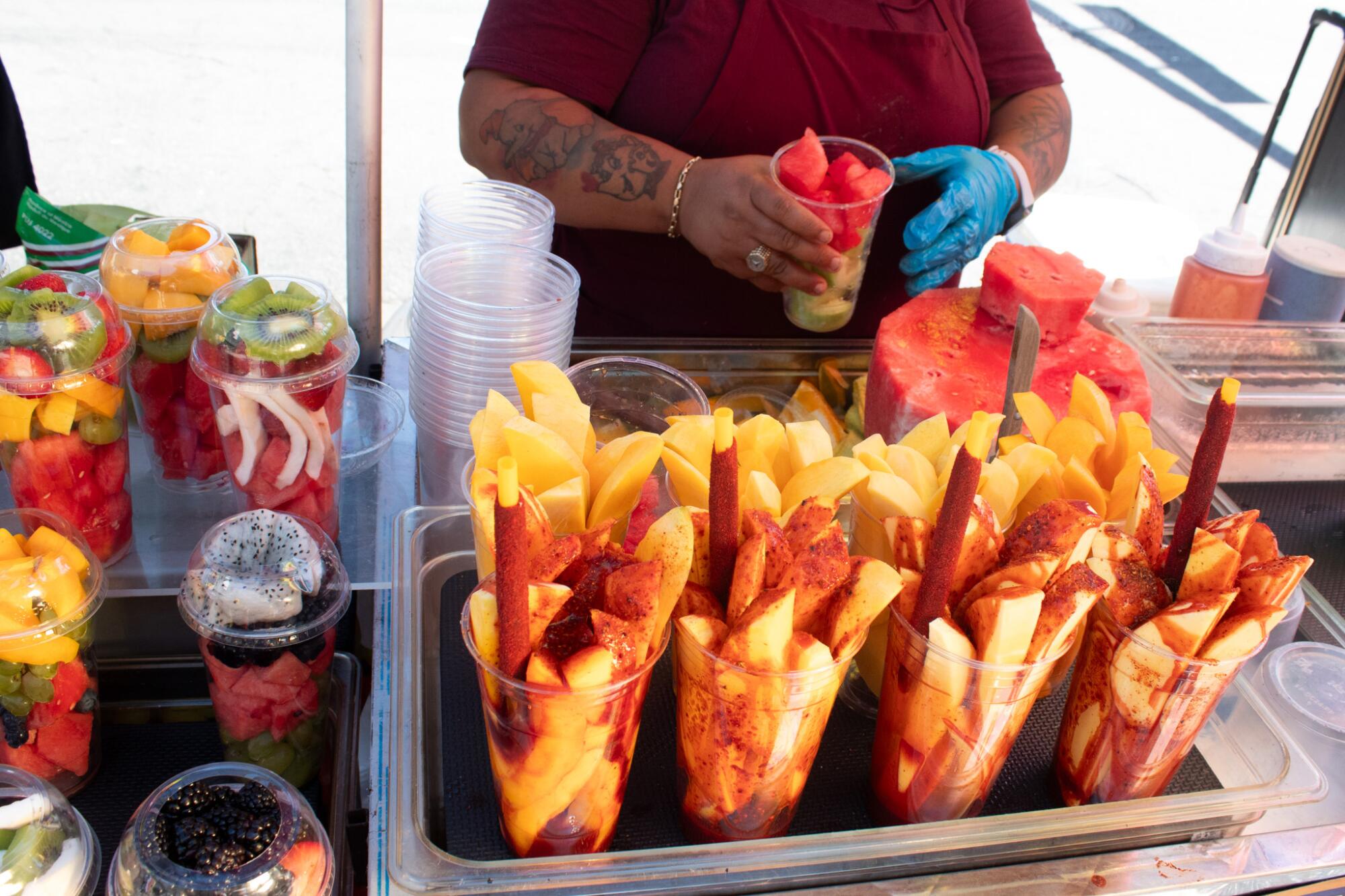
The cityâs ordinance lists no vending within 500 feet from multiple locations across L.A. That includes the Hollywood Walk of Fame, Universal Studios, El Pueblo de Los Angeles Historical Monument, Crypto.Com Arena/LA Live, Dodger Stadium, the Hollywood Bowl and the L.A. Coliseum/Banc of California Stadium on event days. Other venues âdetermined by the Board of Public Worksâ may also be considered as no vending zones, according to the county.
A recent lawsuit, brought by street vendors and community organizations, is challenging the cityâs no vending zones policy, saying it violates SB 946. The city lists objective health, welfare concerns and safety as the basis for its policy in the suit. The suit also alleges that the city is violating âfederal and state constitutional guaranteesâ by encouraging stores to occupy wide sections of sidewalks.
Started by millennial activists, the Avocado Heights Vaquer@s are helping mobilize equestrian communities to fight expansion that threatens an agrarian way of life.
The city tried to get the lawsuit dismissed, but an L.A. Superior Court judge ruled that it can continue.
Among the plaintiffs is Merlin Alvarado, who has been a street vendor in L.A. for 16 years. For the last couple of years, she has been selling near the Hollywood Walk of Fame in Hollywood. When she was growing up in Honduras, she would often help her mom sell fruit.
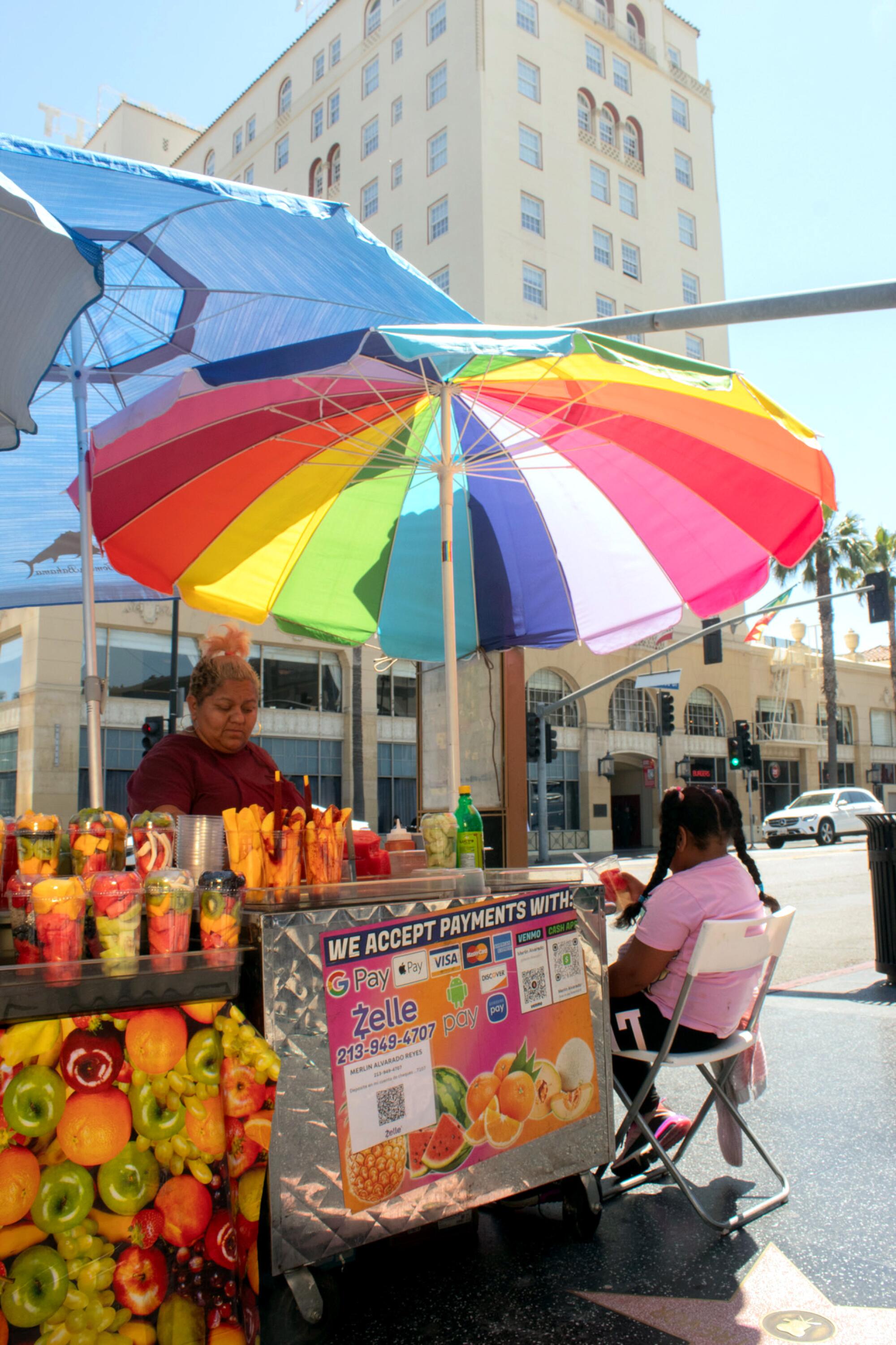
âI can tell you that for me, itâs something normal. Itâs nice because that was my childhood. What I can remember is that my mom would sell, and I would help her,â Alvarado said.
For the record:
7:39 p.m. July 16, 2023An earlier version of this article incorrectly said that Clara Estrada Vasquez works hard so that her children wonât have to when they get older. The vendor is Merlin Alvarado, not Vasquez.
Now, Alvarado works hard now so that her children wonât have to when they get older. âI want them to know that my job is very heavy, and I donât want to see you out on the street, not because itâs a bad job but because I want you to earn more in a job that isnât as dangerous as mine,â Alvarado said.
The danger Alvarado refers to is the violence aimed at street vendors. In the last couple of months, there have been multiple reports of attacks and robberies of street vendors. Alvarado said the violence vendors face is something that most people donât think about.
All three vendors, who are women, recognize that they can face difficulties when it comes to protecting themselves. So, among other things, Orozco makes sure that she closes her stand and heads home after sunset. She said she knows vendors that have been attacked, and she believes the main reason is that they were selling at night.
No matter when or where they sell food, the struggle for survival continues.
More to Read
About this story
The Latinx experience chronicled
Get the Latinx Files newsletter for stories that capture the multitudes within our communities.
You may occasionally receive promotional content from the Los Angeles Times.
